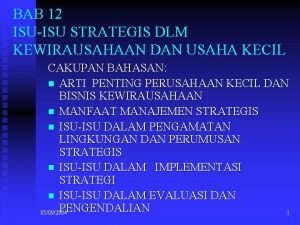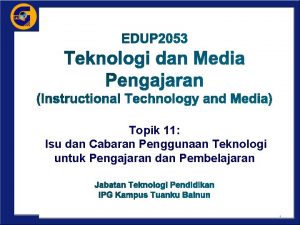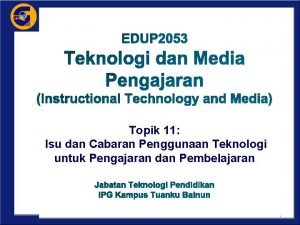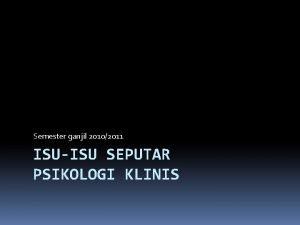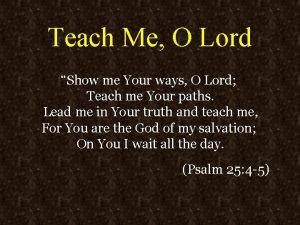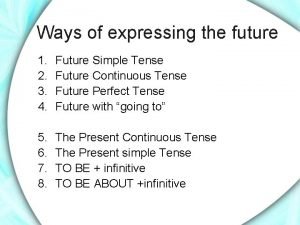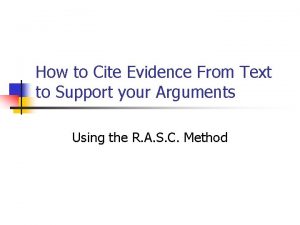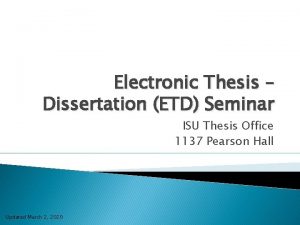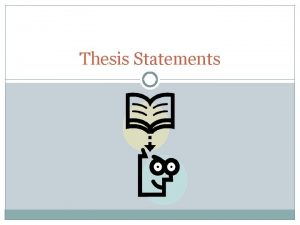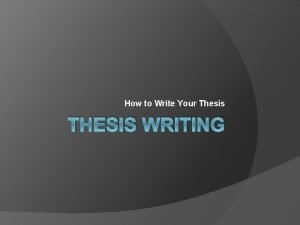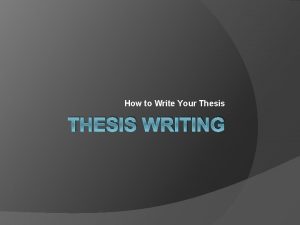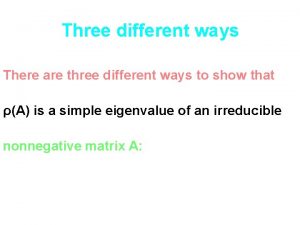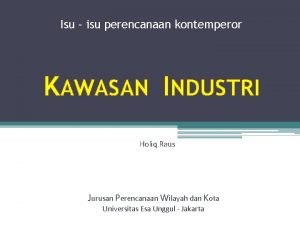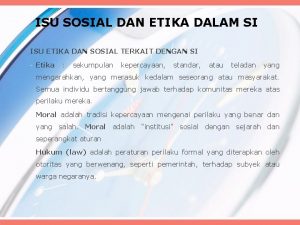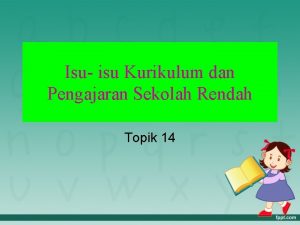Your ISU Thesis and Outline Different Ways of




















- Slides: 20

Your ISU Thesis and Outline

Different Ways of Reading » You could “read” both novels with a literary theory. » For example… » Marxist » Psychological » Gender » Brainstorm the ideas that exist within both novels.

For Example » Comparing Hamlet & Three Day Road – psychological reading » What? How? » Look at similarities: ˃ Father ˃ Relationship with “mother” ˃ “insanity” ˃ misled ˃ distrust of women ˃ search for a father figure ˃ Jung

Example Thesis » Although, the horrors of Hamlet and Three Day Road could be attributed to the protagonists’ traumatic lives, Hamlet and Xavier believe that their heinous actions are predetermined and they therefore bring about the tragic conclusion.

Reading using Comparison • What happens if both characters follow similar paths in the novels? • The thesis must show the similarities in the protagonists’ choices and experiences

Descriptive Thesis: Both characters are crushed by controlling men. Analytic Thesis: The patriarchal social construction of male-female relationships in both novels allows men to crush the women in their lives, despite the women’s attempts to maintain their dignity.

Reading using Contrast • What happens when the protagonists take different courses of action? • The thesis must express the differences in the protagonists. • For example, one character may build a better life and the other character may give up.

Descriptive thesis: War changes the way people view things. Analytic thesis: In the novels, war rewrites human values, forcing victims of war to remain inactive or to take action against evil in the hopes that peace will be restored. OR In one novel, the protagonist remains inactive and becomes a victim of war; in the other novel, the protagonist takes action and peace is restored.

So what? » Any relationship between two or more things will involve some degree of SIMILARITY, as well as a degree of DIFFERENCE. » A comparison essay still must answer “So What? ” » Don’t just show the similarities or differences. » Explain the significance of your comparison and how it connects to your thesis.

Descriptive Thesis • “Both novels have a young male protagonist with a smothering mother and a dead brother, and the protagonist runs away to war. ”

• A dynamic thesis looks at what is in the books and sees a pattern, and then moves a reader step by step through the pattern; rather than being descriptive, the dynamic thesis is analytic:

Analytic Thesis • “Though both novels show a young protagonist reacting to a smothering mother by running away to war, the first novel reveals a character who repeatedly runs away and therefore never matures, while the second novel shows a character who reconciles his past and therefore finds renewed love. ”

• Changing a descriptive thesis to an analytic thesis is not always easy, and involves two key steps. Though both steps are probably essential, they can be done in any order. Both require serious thought.

1. Look for cause and effect relationships in the action of the story, and look for development of the characters in the story. What I have described as a pattern is really just a series of cause and effect relationships. “A” happens to “B”, so does “C”, and so on. The key here is to ask the questions “What about it? ”, “Why? ”, and “To what effect? ”

2. Look carefully at the ending of the story, to see how it “turns out. ” Virtually all stories have their essence in the last quarter of the book, and often in the last few pages. The rest sets up the part of the book where the author reveals the main point. The pattern, therefore, has its culmination in the end of the novel. Start by thinking about the ending, and then move backwards to determine why the story turned out as it did.

Test for Thesis • U - Unified (One main idea) • R- Restricted (Am I attempting too much? ) • P- Precise (Precise words set limits on the topic) • S- Significant (Explore an idea rather than state facts; answers the question “So what? ”)

Your Outline Introduction • Moves from general to specific • Introduces titles, authors, topic • Concludes in a well-articulated thesis Body Paragraphs • Begin with the topic heading (these do not appear in the final essay) • Use parallel structure if possible to list topics • Be mindful of sequence • List supporting points, author and page reference only • Your essay will contain the full quotation as proof and discussion • Each body paragraph must deal with the point for both novels (use point by point comparison rather than block comparison)

Conclusion • Moves from specific (restate idea of thesis in a fresh way) to general • May provide a summary but offers no new proof • End with a general comment often referring to the human condition Note: • In the outline only the topic sentences, thesis and its restatement are written in complete sentences • The remainder of the outline is point form • Use present tense, third person • Use formal language, avoid contractions

Other Notes • Again, you are not limited to “the five paragraph essay” • Think about order and organization • Does chronological order make sense? (make sure you don’t fall into the plot summary trap) • Save your strongest/positive idea for last • Use provided feedback – do not make the same errors • Your first sentence should not involve the novels, just your general topic • Novel titles should be in italics • Avoid run-on sentences (two independent clauses smushed together) • Watch for possessive nouns (its vs it’s, Johns vs John’s) • You start sentences with capitals (seriously!) • Avoid Kiss of Death errors. (RO, CS, VT, orphans…)

It is ok to ask for help! • Come to see me at lunch or afterschool… I have period A prep and I have my e-learning class period C… • No excuses!!!!
 Teknik tapisan
Teknik tapisan Isu-isu strategis dalam perusahaan multinasional
Isu-isu strategis dalam perusahaan multinasional Isu isu komunikasi antar budaya
Isu isu komunikasi antar budaya Isu isu kewirausahaan
Isu isu kewirausahaan Isu etika dalam penulisan
Isu etika dalam penulisan Cabaran teknologi maklumat
Cabaran teknologi maklumat Isu psikologi klinis
Isu psikologi klinis Isu pemasaran
Isu pemasaran Isu isu etika bisnis
Isu isu etika bisnis Etika sains dan teknologi
Etika sains dan teknologi Isu dan cabaran penggunaan teknologi untuk pdp
Isu dan cabaran penggunaan teknologi untuk pdp Isu psikologi klinis
Isu psikologi klinis Etika komputer
Etika komputer Show me your ways o lord teach me your paths
Show me your ways o lord teach me your paths Gods ways are not our ways
Gods ways are not our ways Isu thesis
Isu thesis Example of sentence outline
Example of sentence outline How to do future simple
How to do future simple Different ways of expressing future
Different ways of expressing future Different ways of expressing future
Different ways of expressing future Different ways to cite evidence
Different ways to cite evidence



